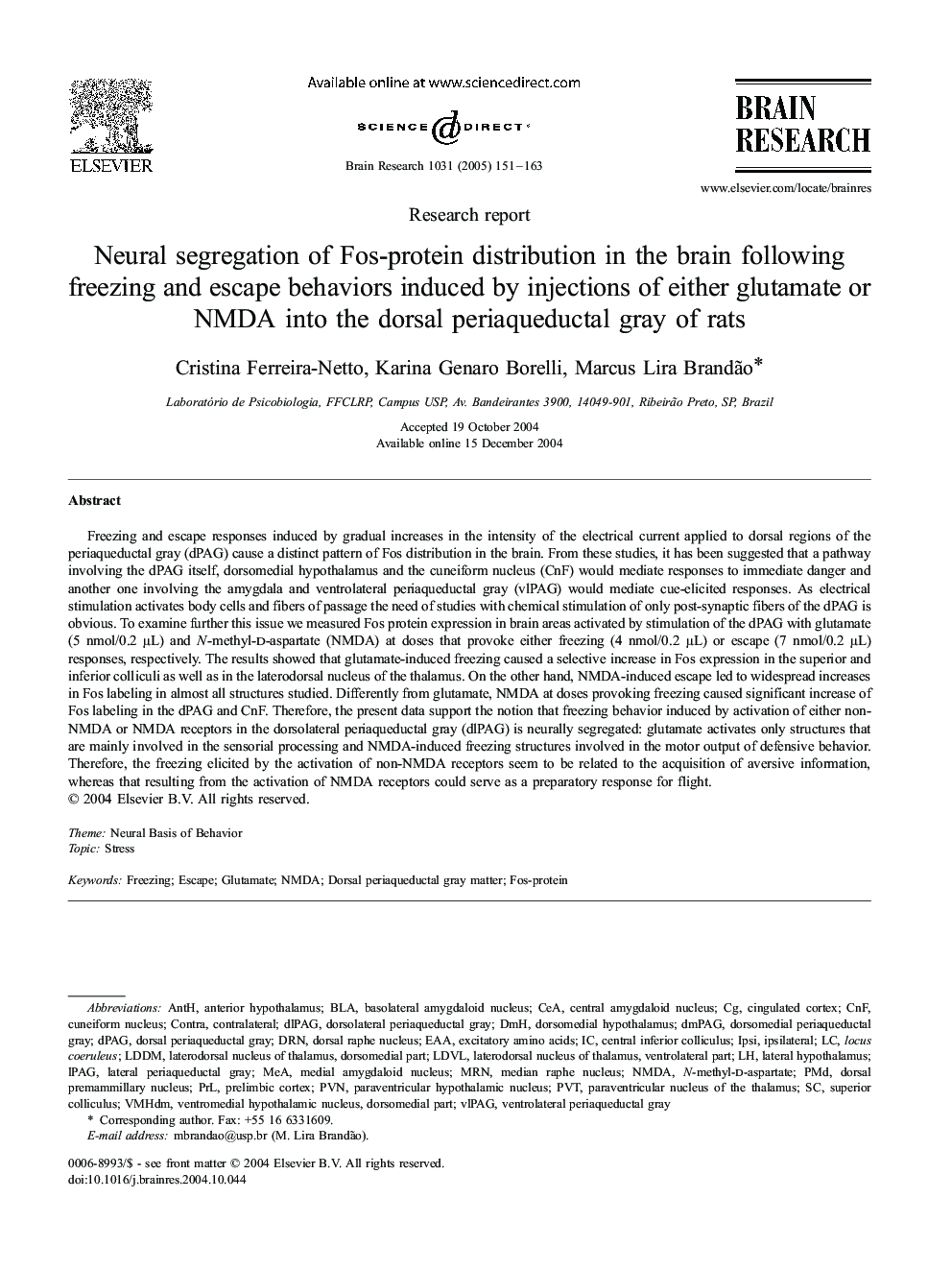| Article ID | Journal | Published Year | Pages | File Type |
|---|---|---|---|---|
| 9416846 | Brain Research | 2005 | 13 Pages |
Abstract
Freezing and escape responses induced by gradual increases in the intensity of the electrical current applied to dorsal regions of the periaqueductal gray (dPAG) cause a distinct pattern of Fos distribution in the brain. From these studies, it has been suggested that a pathway involving the dPAG itself, dorsomedial hypothalamus and the cuneiform nucleus (CnF) would mediate responses to immediate danger and another one involving the amygdala and ventrolateral periaqueductal gray (vlPAG) would mediate cue-elicited responses. As electrical stimulation activates body cells and fibers of passage the need of studies with chemical stimulation of only post-synaptic fibers of the dPAG is obvious. To examine further this issue we measured Fos protein expression in brain areas activated by stimulation of the dPAG with glutamate (5 nmol/0.2 μL) and N-methyl-d-aspartate (NMDA) at doses that provoke either freezing (4 nmol/0.2 μL) or escape (7 nmol/0.2 μL) responses, respectively. The results showed that glutamate-induced freezing caused a selective increase in Fos expression in the superior and inferior colliculi as well as in the laterodorsal nucleus of the thalamus. On the other hand, NMDA-induced escape led to widespread increases in Fos labeling in almost all structures studied. Differently from glutamate, NMDA at doses provoking freezing caused significant increase of Fos labeling in the dPAG and CnF. Therefore, the present data support the notion that freezing behavior induced by activation of either non-NMDA or NMDA receptors in the dorsolateral periaqueductal gray (dlPAG) is neurally segregated: glutamate activates only structures that are mainly involved in the sensorial processing and NMDA-induced freezing structures involved in the motor output of defensive behavior. Therefore, the freezing elicited by the activation of non-NMDA receptors seem to be related to the acquisition of aversive information, whereas that resulting from the activation of NMDA receptors could serve as a preparatory response for flight.
Keywords
BLALDvlDMPAGdlPAGdPAGEAADMHDRNCNFCeAipsiStressexcitatory amino acidsdorsomedial periaqueductal graydorsolateral periaqueductal graydorsal periaqueductal grayipsilateralAnthcontralocus coeruleusNeural Basis of Behaviorbasolateral amygdaloid nucleuscuneiform nucleusdorsal raphe nucleuscentral amygdaloid nucleusdorsomedial hypothalamusanterior hypothalamuscontralateral
Related Topics
Life Sciences
Neuroscience
Neuroscience (General)
Authors
Cristina Ferreira-Netto, Karina Genaro Borelli, Marcus Lira Brandão,
